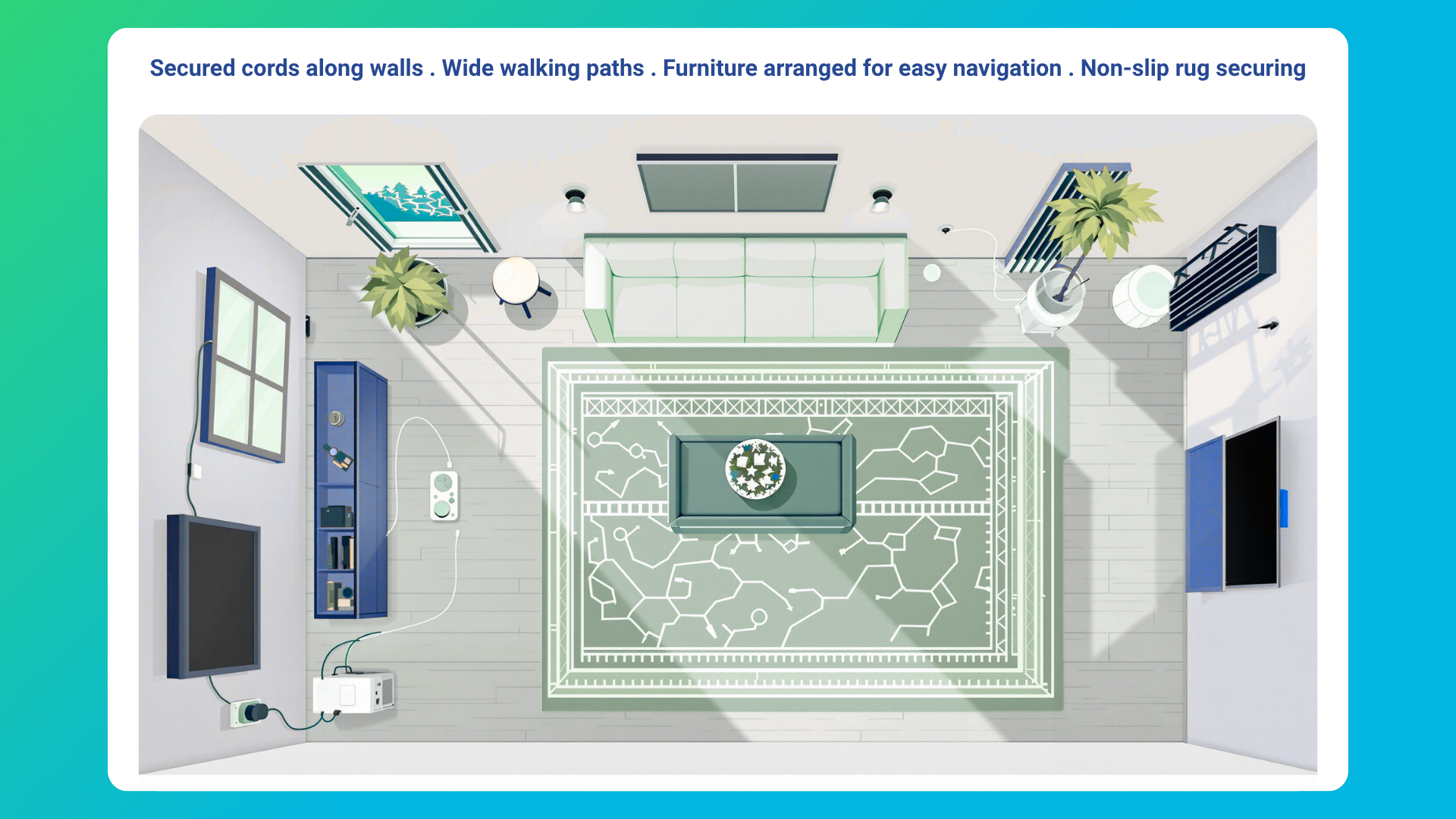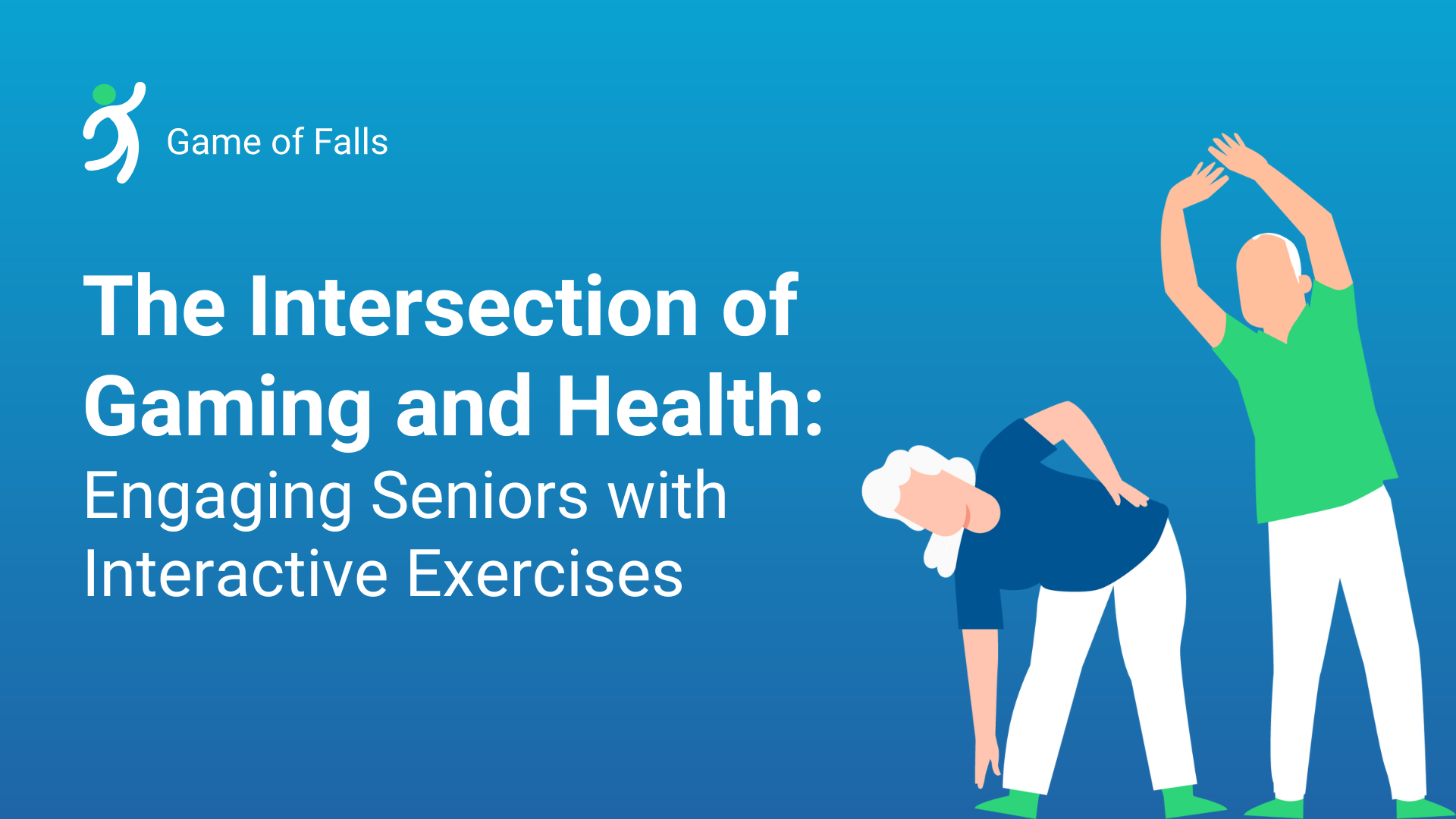
For many seniors living in the U.S., home isn’t just a place; it’s a feeling. Until a fall happens. Falls can be a huge deal for older adults, and they’re actually the top cause of injuries in this age group. The good news, though, is that most of these tumbles happen at home, and with just a few tweaks, we can stop them from happening. A lot of caregivers think turning a home into a safe haven means expensive renovations, but that’s totally not true. Thanks to tips from the Centers for Disease Control and Prevention (CDC), even small, wallet-friendly changes can go a long way in keeping seniors safe.
If you’re helping care for an older adult, this handy checklist will show you how to spot potential hazards in their home and make quick upgrades that really matter.
1. Take a Safety Walk Through the House
Before diving into any changes, why not take a good look around the house? Check out the stairs, floors, bathrooms, and lighting—just what the CDC’s “Check for Safety” guide suggests. Grab a notepad and watch how your loved one moves about their space; jot down anything that seems off or unsafe.
Here’s a quick list of common culprits:
- Loose rugs, tangled cords, or clutter blocking paths
- Dimly lit spaces or missing nightlights
- Slippery surfaces in the bathroom
- Steps that lack solid handrails
Writing these issues down gives you a solid plan of attack, which is way better than playing the guessing game!
2. Brighten Up Key Areas
Not enough light is one of the sneakiest fall risks for older adults. The CDC and GoAudits agree—good lighting is a must to keep those late-night trips and falls at bay.
Here are some easy, budget-friendly ideas:
- Switch to LED bulbs to keep things light and bright
- Pop nightlights in bathrooms, hallways, and bedrooms
- Use motion-sensor lights for areas like entryways and stairs
- Replace any burnt-out bulbs right away
Encourage seniors to always flick on the lights before getting up at night or moving between rooms, just to be on the safe side!
3. Keep Pathways and Floors Clear

A tidy space is a safe space, my friend. Caregivers should always check that floors are clutter-free and that walkways are wide enough for easy navigation, especially for those using walkers or canes.
Stick to these tips from the CDC guide:
- Coil cords and wires securely against walls
- Clear away stacks of newspapers, shoes, and other bits and bobs from the walkways
- Consider getting rid of throw rugs, or use non-slip tape to keep them secure
- Rearrange furniture to create clear pathways
These simple adjustments can make your loved one feel much more confident moving around at home.
4. Focus on Bathroom and Stair Safety
Bathrooms and stairs can be like the Wild West for seniors—super risky! But with a few affordable tweaks, you can make a world of difference.
In Bathrooms:
- Install grab bars by the toilet and in or near the shower
- Use non-slip mats inside the tub and on the floor
- Keep essentials within easy reach so there’s no need for stretching
- Think about getting a shower chair or a handheld showerhead for extra balance and ease
On Stairs:
- Fix any broken or uneven steps immediately
- Pop handrails on both sides of the staircase
- Ensure stairways are bright enough at the top and bottom
As the CDC guide points out, always keep those steps free from clutter like papers, shoes, or odd boxes.
5. Rearrange the Kitchen and Bedroom

Many falls happen when seniors try to reach for stuff that’s too high or too low. GoAudits highlights that making things more accessible is a big deal for preventing falls. So try to put everyday items—like dishes, clothes, medications, and personal stuff—at waist to shoulder height to avoid any awkward stretching.
Here are a few more safety ideas:
- Use sturdy step stools with a handle for those really high shelves
- Keep a lamp or light switch within reach of the bed for late-night needs
- Consider having a phone or an emergency alert button close at hand
These little changes can help prevent those risky stretching or bending moves.
6. Promote Safe Habits and Regular Check-Ups
Making a home fall-proof isn’t just about the layout—it’s also about daily routines and health. Encourage seniors to wear shoes with a good grip, stay active with balance and strength exercises, and keep up with vision and medication reviews.
Local community centers and senior programs might have super affordable exercise classes aimed at boosting strength and coordination, which are big factors in preventing falls.
7. Keep Checking and Maintaining Safety Measures
A safe home doesn’t just happen; it needs regular love and attention. Try scheduling monthly check-ins to revisit those safety measures, kind of like how facilities use GoAudits’ safety reviews. Swap out worn equipment, adjust lighting as needed, and always keep those emergency contacts visible.
Creating a warm, safe space doesn’t require a big budget—it’s all about showing care, staying aware, and putting in the effort.
With just a few tweaks and a caregiver’s watchful eye, seniors can lead a safe and happy life right at home.
For older adults, having their own space is priceless. But with that independence comes a sneaky risk: falls. The bright side? Many of those falls can be avoided with just a few simple adjustments. Here’s a friendly room-by-room guide to help you make your home safer, while still feeling comfortable and free. Living Room: Make […]
So, picture this: every 11 seconds, an older adult finds themselves in an emergency room due to a fall. Yikes, right? Falls might be the top culprit for injuries among seniors, but here’s the silver lining—most of these accidents can be avoided. With the right falls prevention programs rooted in evidence and some smart home […]
If you’re caring for an aging parent or planning for your own future, you’ve probably wondered how technology can help make senior care better, safer, and more comfortable. The good news? We’re living through an incredible time of innovation that’s transforming how we approach aging and caregiving. Let’s explore the exciting developments that are making […]
As technology continues to advance, our perspective on health and wellness is evolving with it. Nowadays, for older adults, staying active and engaged is super important for keeping their bodies healthy and for enjoying a vibrant and fulfilling life. One pretty cool trend that’s popping up is the blend of gaming and health, where interactive […]





